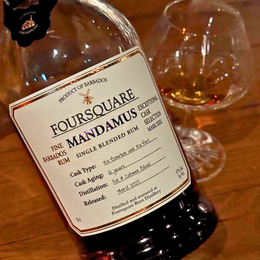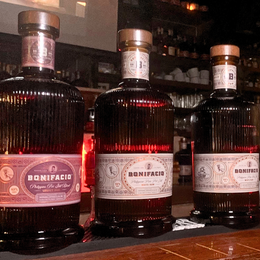
Japanese rums, in contrast to their renowned malt whisky counterparts, occupy a rather niche position, even within the world of rum enthusiasts. The most fervent admirers of Velier are likely acquainted with Nine Leaves, a distillery based in Osaka that recently ceased operations. Meanwhile, others may have sporadically encountered an Okinawan distillery or two, by which I mean a distillery located on Okinawa Island itself. However, tucked away in the north-western corner of Ishigaki Island, there exists a rum distillery bearing the name of Ishigaki itself, which opened its doors merely two years ago and has already left an indelible mark on the world of rum.
Ishigaki Distillery’s founder, Francois, a friend and fellow member of The Rum Cartel, possesses a refined palate for exquisite rums. This discerning taste is mirrored in his dedication to crafting agricole-style rums on the island of Ishigaki, extending even to the meticulous selection and cultivation of cane varietals for his creations. He fondly recounts the trials and tribulations of establishing his own distillery, which encompasses not merely the management of the distillery and business operations, but also having to learn the intricate skills and techniques involved in cane harvesting. Although I am unable to recall the specific cane varietal used in his rums, it is an interesting tidbit that this varietal was chosen for its resilience against the elements, as Francois cheekily alluded to on his label, describing it as “Typhoon-resistant”. For the distillation process, Ishigaki Distillery employs a hybrid copper pot-column still, adhering generally to a singular configuration or mark. However, Francois has subtly suggested that they are indeed experimenting with various configurations for their forthcoming expressions.
On to the tasting of Ishigaki’s inaugural rum, Nagura, an unaged spirit distilled from sugarcane juice and diluted to 56% abv, the nose was an absolute delight, exuding richness and oiliness, with the intense sweetness of buttered corn cobs that only increased my anticipation to taste it. Intriguingly, there was a layer of truffle, reminiscent to some of cooking gas, running right through the centre, distinguishing the initial sweetness from a more savoury profile, akin to a batch of fresh kelp trawled from the seas. At the very end, a return of sweetness emerged, this time of red fruits like dried hawthorn flakes, a cherished childhood favourite of mine.
The palate was equally expressive, though not as rounded as I had anticipated. There was a subtle dryness in its texture that was quite unexpected, considering that such dryness is typically associated with prolonged contact with wood. A profound sweetness pervaded the experience too, once more evoking the memory of hawthorn candies, though this time presented as whole hawthorn berries enveloped in a caramel glaze. Accompanying these were fresh, grassy notes, reminiscent of a crisp spring morning, glistening with dew. And in the finish, savoury notes emerged, akin to green olives, a whisper of blue cheese, and a sprig of thyme.
With such a complex and expressive character, it is scarcely surprising that the Nagura rum was awarded with an IWSC Gold, achieving a remarkable score of 95 in 2025—a distinction not easily attained, and even less so for a distillery that has merely been in operation for two years. Even Peter Holland and Daniele Biondi expressed their admiration for the Nagura with great fondness. I daresay it would be prudent to say that the rum world is eagerly awaiting Ishigaki’s forthcoming rum releases.


Your occasional rum addict!






